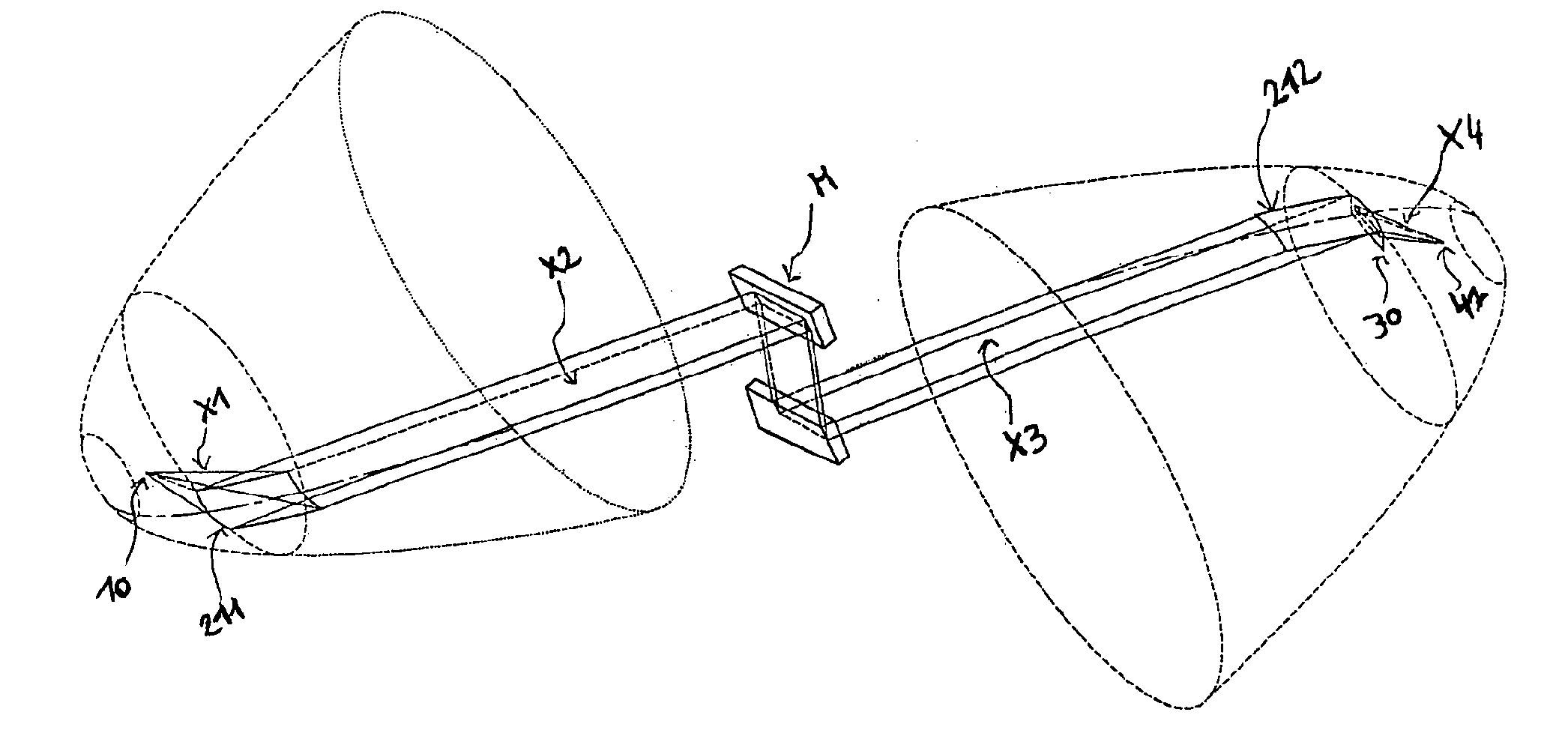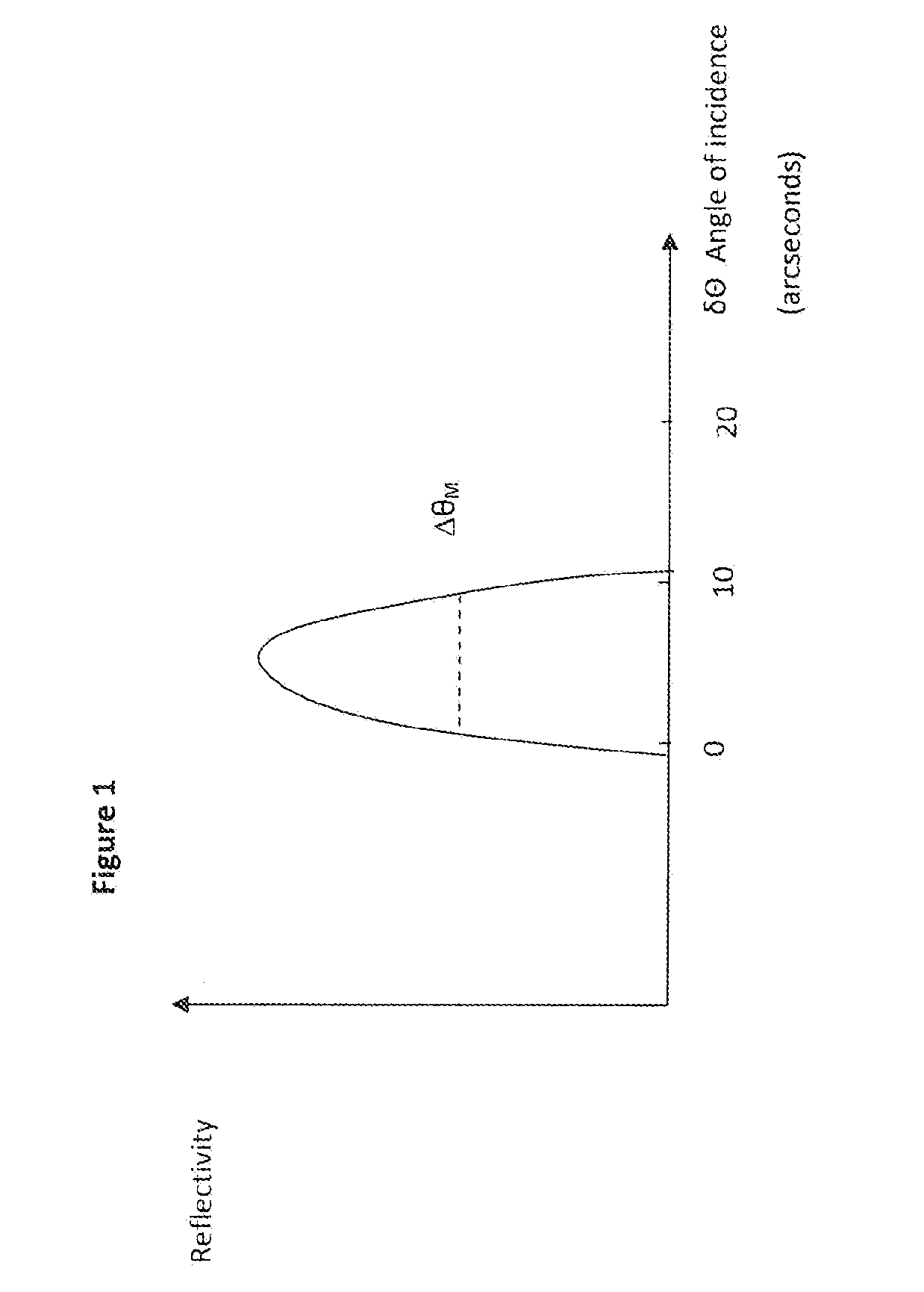X-ray beam device
a beam device and beam technology, applied in the direction of material analysis, material analysis using wave/particle radiation, instruments, etc., can solve the problems of limited efficiency of collimating optical systems, insufficient use of multi-layer optical elements to filter x-ray beams emitted by sources, and insufficient high-resolution diffraction applications
- Summary
- Abstract
- Description
- Claims
- Application Information
AI Technical Summary
Benefits of technology
Problems solved by technology
Method used
Image
Examples
Embodiment Construction
[0016]According to the invention, this object is achieved by means of an X-ray beam device for X-ray analytical applications, comprising an X-ray source designed such as to emit a divergent beam of X-rays; and an optical assembly designed such as to focus said beam onto a focal spot, wherein said optical assembly comprises a first reflecting optical element, a monochromator device and a second reflecting optical element sequentially arranged between said source and said focal spot, wherein said first optical element is designed such as to collimate said beam in two dimensions towards said monochromator device, and wherein said second optical element is designed such as to focus the beam coming from said monochromator device in two dimensions onto said focal spot.
[0017]The sample to be analyzed by means of x-ray metrology, diffraction or reflectometry can usually be located at the focal spot. Thus, the first reflecting optical element collects the divergent beam emitted by the x-ray ...
PUM
 Login to View More
Login to View More Abstract
Description
Claims
Application Information
 Login to View More
Login to View More - R&D
- Intellectual Property
- Life Sciences
- Materials
- Tech Scout
- Unparalleled Data Quality
- Higher Quality Content
- 60% Fewer Hallucinations
Browse by: Latest US Patents, China's latest patents, Technical Efficacy Thesaurus, Application Domain, Technology Topic, Popular Technical Reports.
© 2025 PatSnap. All rights reserved.Legal|Privacy policy|Modern Slavery Act Transparency Statement|Sitemap|About US| Contact US: help@patsnap.com



